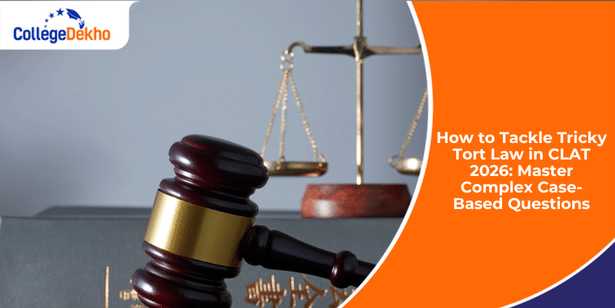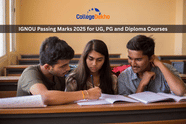
Tort law questions in the CLAT exam can seem tricky at first but once you get the pattern, it becomes one of the easiest sections to score in. The trick is the quick identification of the facts, recognizing the tort that applies, and then structuring the answer logically within the limited time available. For most students, the problem is not that tort law is hard, but that they do not have a clear approach to solve the case-oriented questions in a systematic manner.
What is Tort Law?
Tort law deals with situations where one person's actions cause harm or loss to another person. It's different from criminal law – instead of punishing wrongdoers with jail time, tort law focuses on compensating the victim for their losses. The basic principle is straightforward: if your careless, intentional, or wrongful action harms someone else or damages their property, they can seek compensation from you.
For example, if a driver texting while driving hits a pedestrian, or someone's cricket ball breaks your window, tort law determines who's responsible and what remedy should be provided.
How to Tackle Tricky Tort Law in CLAT 2026: Master Complex Case-Based Questions
Check here the best strategies to tackle tort law questions in CLAT 2026:
1. Read the case carefully and highlight key facts
Students often lose marks because they cannot properly comprehend the case when they dive in too quickly. Read it slowly and underline important facts such as who did what, where, and when. Leave the irrelevant details for; note the actions that might harm someone or constitute a breach of a duty.
Case Fact | Why It Matters |
|---|---|
Ramesh hit a pedestrian while reversing his car | Indicates possible negligence |
Pedestrian suffered minor injuries | Helps assess damages |
Ramesh had parked in a no-parking zone | Shows potential breach of duty |
2. Identify the Type of Tort Quickly
Tort law generally covers areas like negligence, defamation, nuisance, trespass, and strict liability. Once you have the facts, ask yourself: “Which tort does this resemble?”
Scenario | Likely Tort |
|---|---|
Shopkeeper spreads false rumors about a competitor | Defamation |
Factory emits smoke that damages nearby homes | Nuisance |
Driver hits pedestrian while texting | Negligence |
Trespasser enters a private garden without permission | Trespass |
3. Break Down the Elements of the Tort
Every tort has certain basic parts called elements that must exist for someone to be legally liable. In the case of negligence, these elements are easy to remember and check.
Duty of care |
|---|
Breach of duty |
Causation |
Damage |
If all of these points are satisfied, then a tort does exist. This method makes troublesome cases easier to deal with, for you are no longer guessing but following a clearly defined process.
Example:
Element | Fact From Case | Analysis |
|---|---|---|
Duty of care | Driver owed pedestrian safety | Yes, a driver must care for pedestrians |
Breach of duty | Driver texting while driving | Yes, careless behavior |
Causation | Accident occurred due to distraction | Yes, texting caused the harm |
Damage | Pedestrian injured | Yes, minor injury recorded |
4. Use IRAC Method for Answers
IRAC (Issue, Rule, Application, Conclusion) helps structure answers clearly.
-
Issue: Identify the key issue in one sentence.
-
Rule: Relevant legal principle mentioned in it.
-
Application: Discuss how the facts satisfy the elements of the tort.
-
Conclusion: Give a short statement like “Yes, Ramesh is liable for negligence.”
IRAC Step | Example |
|---|---|
Issue | Did Ramesh commit negligence by hitting the pedestrian? |
Rule | Negligence occurs when there is a duty of care, breach, causation, and damage. |
Application | Ramesh owed a duty as a driver, breached it by texting, caused the accident, and pedestrian got injured. |
Conclusion | Ramesh is liable for negligence. |
5. Focus on Causation and Damages
It is often confusion among students about what constitutes damage or whether the action caused it. Ask yourself.
- Would the damage have occurred if the defendant acted differently?
- Is the damage legally compensable?
Scenario | Cause-Effect Analysis |
|---|---|
Tree falls on car due to heavy storm | Not liable, natural event |
Driver runs red light and hits car | Liable, direct cause of damage |
Company pollutes river, people get sick | Liable, clear link between pollution and harm |
6. Don’t Ignore Defences
Defenses that raised by the defendants include consent, contributory negligence, or necessity. Always make sure to determine applicability of defenses before conclusion of liability.
Example: Common Defences
Tort | Possible Defence | Example |
|---|---|---|
Negligence | Contributory negligence | Pedestrian crossed without looking |
Trespass | Consent | Owner allowed entry temporarily |
Defamation | Truth | Statement made was true |
If you take a clear step-by-step approach, tort law in CLAT becomes relatively easy. Read the facts with full concentration, identify the tort, and apply the IRAC method for a structured answer. Regular practice and reference to past cases will ensure that the tougher questions feel like cakewalks and will boost your confidence.
You can also check
How to Build a Personalized CLAT 2026 Study Plan
to organize your preparation effectively and strengthen your performance in tort law and other sections.
Are you feeling lost and unsure about what career path to take after completing 12th standard?
Say goodbye to confusion and hello to a bright future!

Was this article helpful?




















Similar Articles
International Law and Its Impact on Indian Cases: Key Insights for CLAT 2026
SLAT 2026 Admission Schedule: Exam Date, Admit Card, Result
How to Recover SLAT Application Number or Password
How to Prepare for SLAT WAT & PI 2026?
Documents Required to Fill SLAT 2026 Application Form: How to Apply, Image Specifications
How to choose your Symbiosis campus in application?